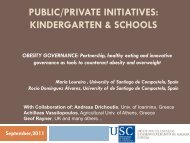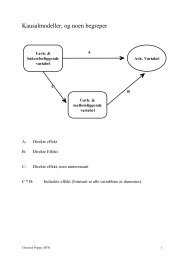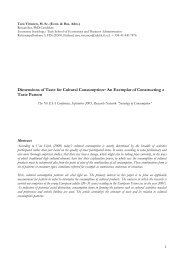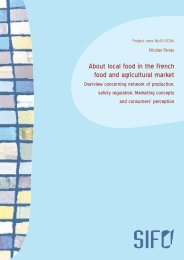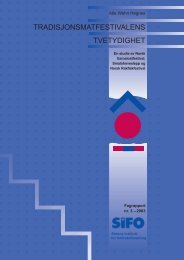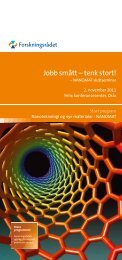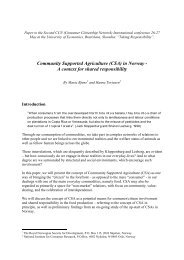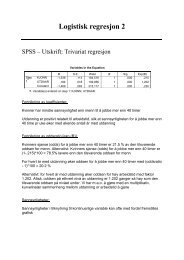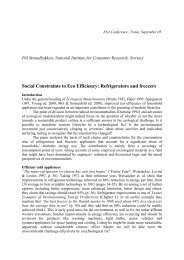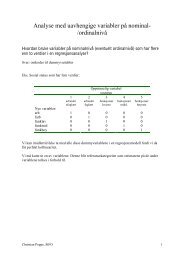Wool in Life Cycle Assessments and Design Tools - SIFO
Wool in Life Cycle Assessments and Design Tools - SIFO
Wool in Life Cycle Assessments and Design Tools - SIFO
- No tags were found...
You also want an ePaper? Increase the reach of your titles
YUMPU automatically turns print PDFs into web optimized ePapers that Google loves.
have to be part of future design-tools <strong>and</strong> certa<strong>in</strong>ly assessments – hopefully clearly communicated tothe consumers, s<strong>in</strong>ce they will be <strong>in</strong>strumental <strong>in</strong> the care <strong>and</strong> end-of-life <strong>and</strong> recycl<strong>in</strong>g-phases.Another stumbl<strong>in</strong>g-block is of course the consumer. Researchers, designers <strong>and</strong> those who havedeveloped the different tools can claim that cotton is washed more often <strong>and</strong> at higher temperaturesthan for example wool (or not, if it serves their purposes), <strong>and</strong> to a certa<strong>in</strong> degree this is backed byrecent f<strong>in</strong>d<strong>in</strong>gs from the Norwegian National Institute for Consumer Research (<strong>SIFO</strong>), but whatconsumers actually do is <strong>in</strong>deed a big unknown – especially if one looks at the world as a whole.While Italians tend to wash even cotton t-shirts <strong>in</strong> cold water, other nationalities will set the dial to60 degrees. And even though wool <strong>in</strong> theory can be aired <strong>and</strong> brushed <strong>in</strong> a rout<strong>in</strong>e clean<strong>in</strong>g-strategy,no-one sits <strong>in</strong> the world’s billions of homes <strong>and</strong> monitors this behaviour. Lax habits <strong>in</strong> house-holds onjudg<strong>in</strong>g what is actually soiled <strong>and</strong> needs clean<strong>in</strong>g, <strong>and</strong> how one actually cleans cloth<strong>in</strong>g (h<strong>and</strong>-wash,mach<strong>in</strong>e-wash, tumble-dry<strong>in</strong>g, iron<strong>in</strong>g, dry-clean<strong>in</strong>g) is unchartered l<strong>and</strong>; as is the whole issue ofdisposal, quality-issues such as pill<strong>in</strong>g, repair, abrasion, etc. As mentioned <strong>SIFO</strong> is conduct<strong>in</strong>gresearch <strong>and</strong> some of this will be presented <strong>in</strong> another paper at the conference, but this is sitespecific.Just as designers us<strong>in</strong>g LCA <strong>and</strong> other tools to improve their eco-footpr<strong>in</strong>t are human, <strong>and</strong> need to<strong>in</strong>terpret the f<strong>in</strong>d<strong>in</strong>gs <strong>and</strong> evaluations, consumers are even more apt to make rash decisions. So forwool to become one of the most eco-friendly fibers, both those design<strong>in</strong>g, dye<strong>in</strong>g, process<strong>in</strong>g <strong>and</strong> theconsumer will have to f<strong>in</strong>d an effective way of communicat<strong>in</strong>g with each other along the value-cha<strong>in</strong>.27



